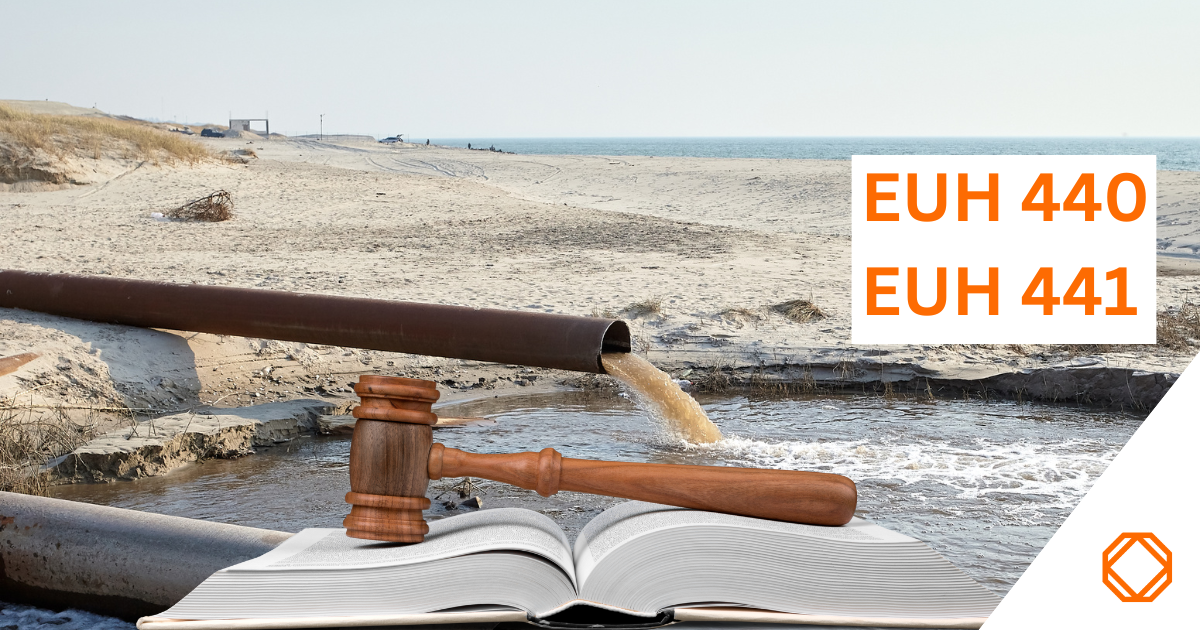New classification PBT and vPvB
There are new classifications in the environmental field that provide a statement about particularly persistent substances since 20.04.2023 in the European Union: PBT and vPvB. The hazard class is called “persistent, bioaccumulative and toxic properties or very persistent and very bioaccumulative properties”, or in short: PBT and vPvB properties.
To some readers, these two abbreviations may not seem strange, but until now the definitions could only be found in the REACH Regulation, where these are part of the concept for the identification of substances of very high concern (SVHC) [1]. Now these substance properties are getting their own classification.
Where can the classification for PBT and vPvB be found?
The classification can be found in the CLP Regulation, Annex II, Part 4, 4.3. Thus, this classification follows the already existing chapter on the classification of aquatic hazard in 4.1 and endocrine disruption in 4.2. Due to the publication in March 2023, the consolidated versions may not yet carry chapter 4.3, depending on when you are reading this article. You will certainly find the new classifications in the Official Journal of the European Union [2].
What do P, B, T and v mean in this context?
Each of the letters mentioned stands for a specific property. Putting them together results in the two classifications PBT and vPvB.
P – Persistence
P is fulfilled if one of the specified degradation half-lives is exceeded. For example, if the degradation half-life in seawater is 60 days or more. Since persistence in the environment is involved, a higher degradation half-life is worse.
B – Bioaccumulation
B is present if the bioconcentration factor (BCF) is higher than 2000 for aquatic organisms. Higher values are also considered worse for BCF.
T – Toxicity
Chronic toxicity values are considered here, but not only those originating from the environment. T is fulfilled if one of the following properties applies to the substance under consideration:
- Long term NOEC or ECX value below 0.01 mg/L – in this context, a lower value is worse.
- The substance is classified as: carcinogenic, category 1, germ cell mutagen, category 1 and/or toxic for reproduction, categories 1 or 2, i.e. CMR but only for the categories indicated.
- STOT RE, category 1 and 2
- The substance is an endocrine disruptor with effect on humans (ED HH) and / or effect on the environment (ED ENV), each in category 1 (ED HH 1, ED ENV 1).
Interestingly, then, the T also exists for ED classification, which was incorporated into the CLP Regulation by the same amending Regulation.
With this in mind, one can already imagine how the properties vP and vB (very persistent, very bioaccumulative) are composed: vP has even higher degradation half-lives than P and vB starts at a BCF of 5000 for aquatic organisms.
Classification criteria
If the properties for P, B and T are fulfilled, the classification PBT occurs. Similarly, vPvB is composed of substances that have the properties vP and vB.
Classification for PBT and vPvB properties
PBTs and vPvBs are not further subdivided into categories. In contrast to e.g. Ozone 1, there is therefore no category 1. The hazards are then presented as follows:
- PBT, Signal word: Danger, EUH440 (Accumulates in the environment and living organisms including in humans.)
- vPvB, Signal word: Danger, EUH441 (Strongly accumulates in the environment and living organisms including in humans.)
Mixture classification
The mixture classification is a non-additive determination with a general concentration limit of 0.1 weight %.
This means that as soon as at least one substance is contained that is classified as PBT or vPvB, the mixture also acquires this classification as soon as 0.1 weight % or more of the substance is contained.
PBT and vPvB in the safety data sheet
As these properties already existed before, according to the definition of the REACH Regulation, information on them can also already be found in the safety data sheet, section 12.5 (Results of PBT and vPvB assessment). In addition, the classifications for the mixture will be found in section 2 and the classification for the components accordingly in section 3.
Transition periods
The following transition periods were specified for the integration of the new classification. Once the transitional period has elapsed, the indication of the classification in the EU legal area is mandatory.
- Classification for substances: 05.2025
- Classification for mixtures: 05.2026
- Period until stock is adjusted for sale:
- Substances: 11.2026
- Mixtures: 05.2028

